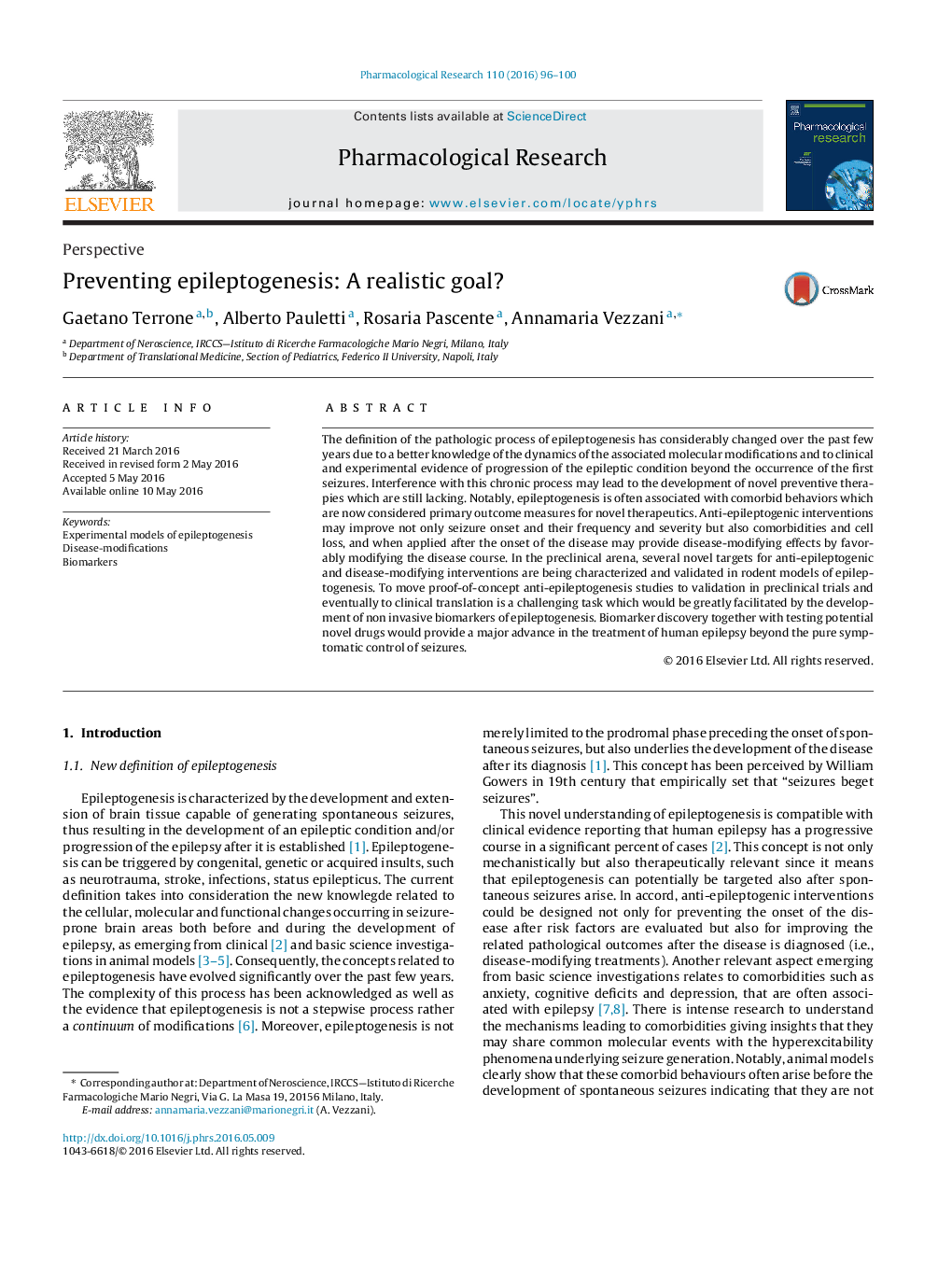| کد مقاله | کد نشریه | سال انتشار | مقاله انگلیسی | نسخه تمام متن |
|---|---|---|---|---|
| 2561866 | 1560830 | 2016 | 5 صفحه PDF | دانلود رایگان |
The definition of the pathologic process of epileptogenesis has considerably changed over the past few years due to a better knowledge of the dynamics of the associated molecular modifications and to clinical and experimental evidence of progression of the epileptic condition beyond the occurrence of the first seizures. Interference with this chronic process may lead to the development of novel preventive therapies which are still lacking. Notably, epileptogenesis is often associated with comorbid behaviors which are now considered primary outcome measures for novel therapeutics. Anti-epileptogenic interventions may improve not only seizure onset and their frequency and severity but also comorbidities and cell loss, and when applied after the onset of the disease may provide disease-modifying effects by favorably modifying the disease course. In the preclinical arena, several novel targets for anti-epileptogenic and disease-modifying interventions are being characterized and validated in rodent models of epileptogenesis. To move proof-of-concept anti-epileptogenesis studies to validation in preclinical trials and eventually to clinical translation is a challenging task which would be greatly facilitated by the development of non invasive biomarkers of epileptogenesis. Biomarker discovery together with testing potential novel drugs would provide a major advance in the treatment of human epilepsy beyond the pure symptomatic control of seizures.
Figure optionsDownload high-quality image (218 K)Download as PowerPoint slide
Journal: Pharmacological Research - Volume 110, August 2016, Pages 96–100
